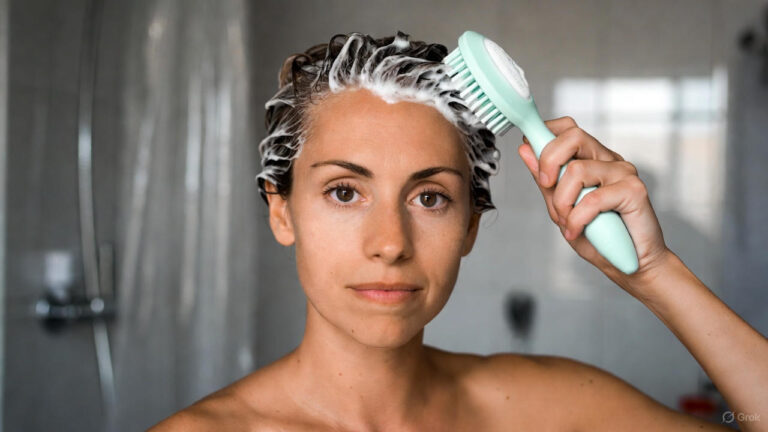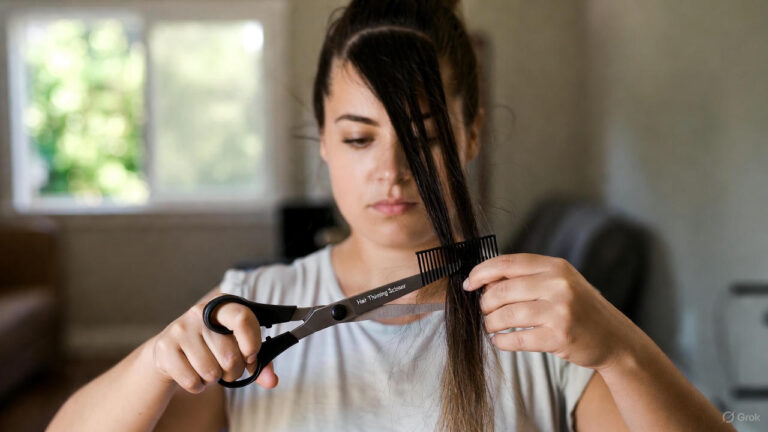Hair, with its myriad textures and structures, is a fascinating aspect of human diversity. Whether you have straight, wavy, curly, or coily hair, the science behind its texture and structure is a complex interplay of genetics, biology, and environmental factors.
Understanding these complexities not only sheds light on the uniqueness of each individual’s hair but also guides effective hair care routines tailored to specific needs.
The Influence of Genetics
Genetics plays a pivotal role in determining the fundamental characteristics of our hair, including its texture and structure. The genes inherited from our parents dictate whether our hair will be straight, wavy, curly, or coily. Specific genes control the shape of the hair follicle, affecting the angle at which the hair grows out of the scalp.
For instance, individuals with straight hair typically have round hair follicles, while those with curly or coily hair possess more elliptical or asymmetrical follicles. The genetic blueprint sets the foundation for our hair’s inherent qualities, but environmental factors also come into play.
The Role of Ethnicity
Ethnicity is another key factor influencing hair texture. Different ethnic groups exhibit distinct hair characteristics, and these differences can be attributed to genetic variations that have advanced over generations.
For example, individuals of African descent often have coily or tightly curled hair, while those of Asian descent may have straight or wavy hair.
The unique combination of genetic factors within each ethnic group contributes to the rich tapestry of global hair diversity. Understanding these variations is essential for developing hair care practices that cater to specific needs associated with different textures.
Hair Shaft Structure
The structure of the hair shaft, the visible part of the hair above the scalp, further defines its texture. The hair shaft consists of three layers: the cuticle, cortex, and medulla.
1. Cuticle
The outermost layer, the cuticle, is a protective barrier composed of overlapping scales. Smooth, flat cuticle scales contribute to straight hair, while raised or uneven scales are characteristic of curly or coily hair. The cuticle’s condition also influences how light reflects off the hair, contributing to its overall shine and smoothness.
2. Cortex
Beneath the cuticle lies the cortex, the thickest layer, responsible for the hair’s strength, elasticity, and color. The arrangement of protein bundles called keratin fibers within the cortex determines whether the hair will be straight or curly. The more elliptical the shape of these fibers, the curlier the hair will be.
3. Medulla
The innermost layer, the medulla, is not always present in every hair strand. Its function and significance remain unclear, and its presence or absence does not significantly impact hair texture or health.
Understanding the composition and arrangement of these layers provides valuable insights into the factors influencing hair texture and guides us in making informed decisions regarding hair care routines.
Environmental Factors
While genetics lays the foundation, environmental factors can influence the expression of these genetic traits. Humidity, temperature, exposure to the sun, and chemical treatments all play roles in shaping the way our hair looks and feels.
1. Humidity
Humidity can alter the hydrogen bonds within the hair shaft, impacting its shape. This is particularly evident in individuals with curly or wavy hair, as increased humidity can lead to frizz and changes in curl pattern.
2. Temperature
Extreme temperatures, both hot and cold, can affect the moisture balance of the hair. Excessive heat from styling tools or environmental conditions can lead to dryness and damage, influencing the overall texture.
3. Sun Exposure
Prolonged exposure to the sun’s ultraviolet (UV) rays can damage the cuticle, leading to dryness, brittleness, and color fading. Protecting the hair from UV radiation is crucial for maintaining its health and texture.
4. Chemical Treatments
Chemical treatments, such as perming, straightening, or coloring, can alter the structure of the hair shaft. These treatments often involve breaking and reforming the disulfide bonds within the hair, changing its shape and texture.
Conclusion
The science of hair texture and structure is a fascinating journey into the intricate details that make each head of hair unique. From the influence of genetics and ethnicity to the composition of the hair shaft and the impact of environmental factors, understanding these complexities is essential for effective hair care.
FAQs
Q1: Can I change my hair’s natural texture?
While you cannot permanently change your hair’s natural texture, you can temporarily alter it through styling techniques or chemical treatments. However, these methods may have long-term effects on the health of your hair.
Q2: How can I protect my hair from environmental damage?
To protect your hair from environmental damage, use products with UV protection, avoid excessive heat styling, and moisturize regularly. Wearing hats or scarves in extreme weather conditions can also provide additional protection.
Q3: Do hair care products cater to different hair textures?
Yes, many hair care products are formulated to cater to specific hair textures. Look for products that address the unique needs of straight, wavy, curly, or coily hair to achieve optimal results.



